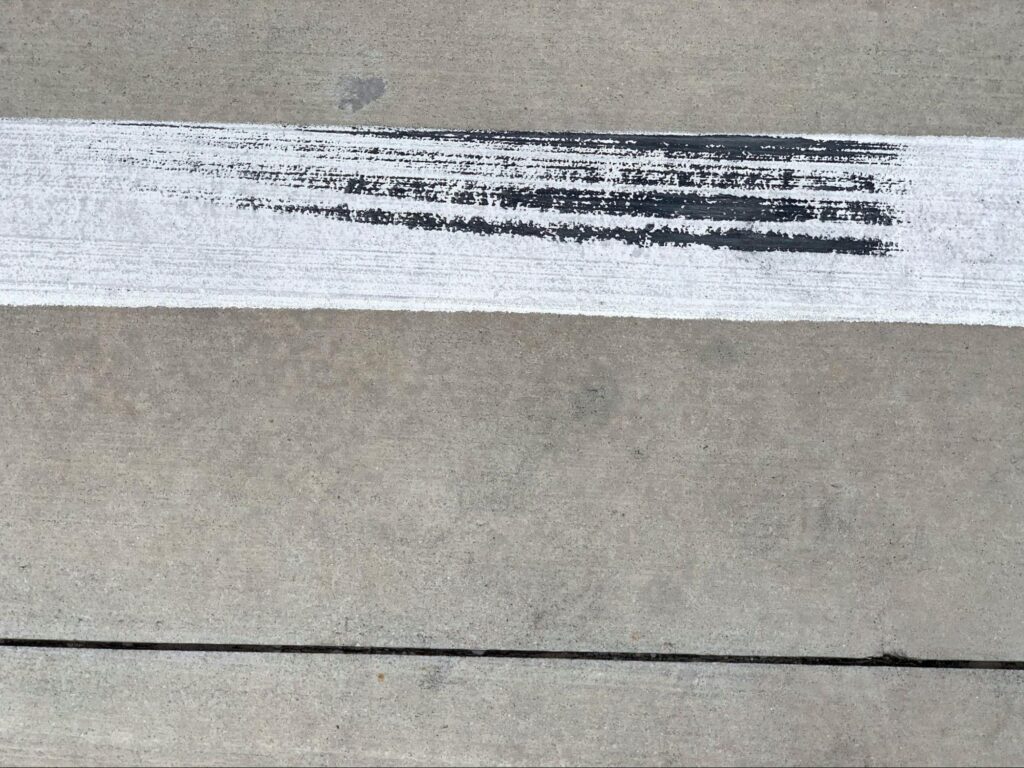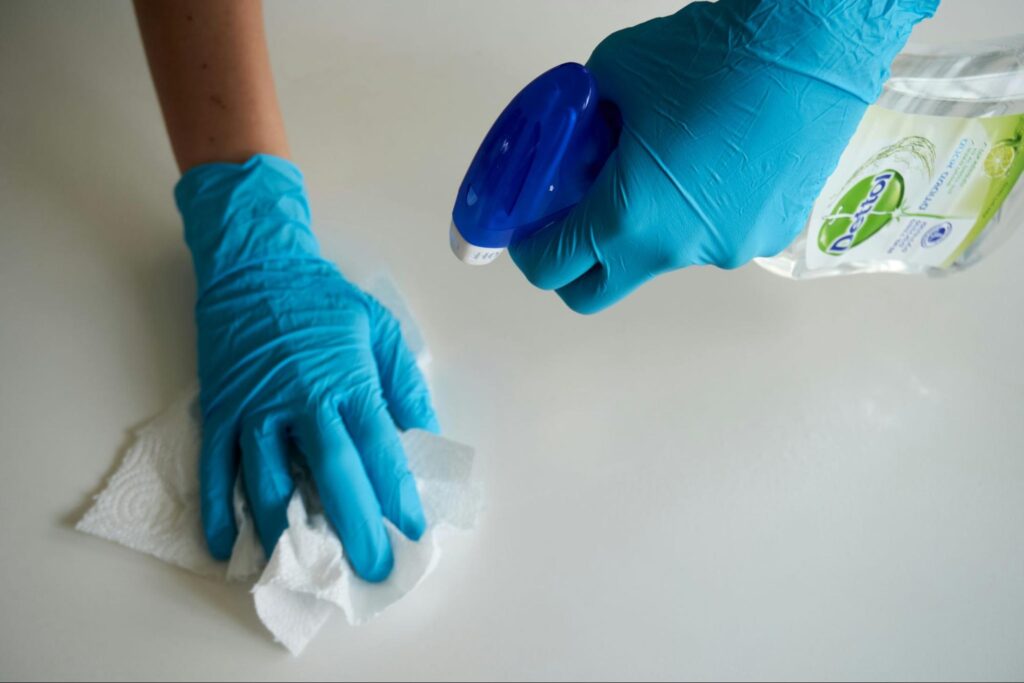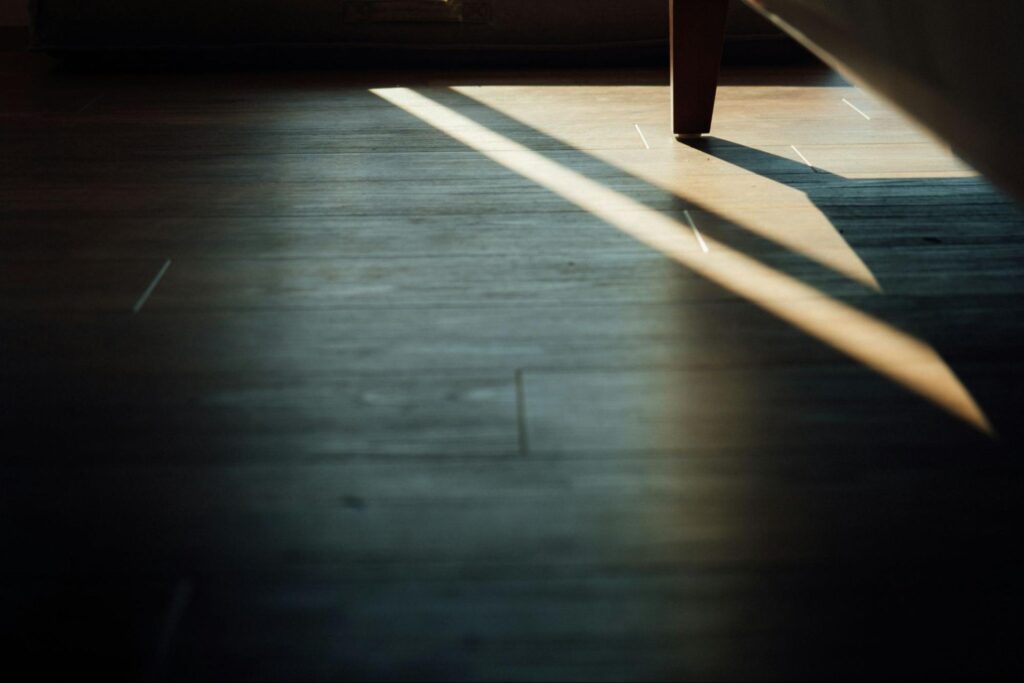
Vinyl flooring is a popular and durable option in many UK and Irish homes, known for its low maintenance and sleek appearance. But even the best-kept floors can suffer the occasional annoyance of rubber marks, especially those dreaded black scuff marks from shoes, furniture legs, or pushchairs. These unsightly marks may look permanent, but don’t worry — they’re often easier to remove than you’d expect.
In this guide, we’ll show you how to remove scuff marks from vinyl flooring using a mix of natural methods and effective commercial solutions — all gentle enough to keep your floors looking spotless without causing scratches or damage.
Why Rubber Marks Appear on the Floor

If you’ve ever noticed a streak or smudge on your vinyl flooring after someone walks through with dark coloured soles or moves a piece of furniture, you’re likely looking at a rubber scuff mark. These marks appear when friction causes a small layer of rubber residue to transfer onto the surface of the floor.
They are notoriously hard to clean, even harder than cleaning tiles after a renovation.
Common culprits include trainers, boots, furniture legs with rubber caps, wheels from children’s toys, and even certain floor protectors that were meant to prevent damage.
Though vinyl flooring is known for being durable and resistant to moisture and stains, it’s still susceptible to pressure and abrasion.
When rubber is dragged across the floor — even lightly — the heat and pressure from the movement cause tiny particles to break away and bond with the top layer of the vinyl. Over time, if not cleaned properly, these scuff marks can accumulate and make your flooring appear dirty or dull.
It’s also worth noting that rubber marks often attract additional dirt and grime, making them look worse than they are. The marks themselves don’t typically penetrate the flooring or cause structural damage, but they can be stubborn to clean if left too long.
That’s why knowing how to remove scuff marks from vinyl using the right methods is key to maintaining the fresh appearance of your floors — without accidentally causing scratches or using harsh chemicals that could degrade the finish.
How to Remove Rubber Marks from Vinyl Flooring: 6 Natural Methods

Let’s begin with some DIY-friendly, natural methods using everyday household items — no need for harsh chemicals.
Rubbing Alcohol
Rubbing alcohol (or surgical spirit, as it’s commonly known in the UK) is brilliant for lifting scuff without harming the vinyl.
Dip a soft cloth into a small amount and gently rub the scuff marks in a circular motion. You’ll often see the rubber residue lift immediately.
Avoid pouring directly on the floor — always apply using a cloth or sponge and wipe clean afterwards with plain water.
Using a Pencil Eraser
A clean pencil eraser can work wonders, especially on small or light black scuff marks. Simply rub the eraser over the mark until it disappears, then wipe away any leftover residue with a damp cloth.
Use light pressure to avoid creating scratches.
Brooming with a Tennis Ball
Believe it or not, a tennis ball can be a great tool.
Cut a small slit into an old ball and fix it onto the end of a broom handle. Then use it to rub over the scuff marks. The textured rubber of the ball lifts rubber easily when you use a bit of elbow grease.
This is especially handy for large areas or commercial spaces.
Mixing Vinegar and Warm Water
This is a classic homemade solution. Mix equal parts vinegar and warm water, dip a soft cloth in, and gently scrub the scuff in a circular motion. This method also helps loosen any grime or dirt.
Be sure to rinse the area with plain water and dry thoroughly to avoid leaving excess water on the floor.
Applying a Baking Soda Paste
Baking soda is a natural and gentle abrasive. To make a baking soda paste, mix a few tablespoons of baking soda with just enough warm water to form a spreadable mixture.
Apply it directly to the scuff, then use a soft cloth or sponge to gently rub.
The paste lifts rubber residue without harming your vinyl flooring. Wipe and rinse with clean water when done.
Gently Scrub with Toothpaste
A non-gel white toothpaste can work similarly to baking soda. It’s slightly abrasive but safe on vinyl.
Apply a small dab onto the mark, then use a damp cloth to rub in a circular motion. After the scuff is gone, wipe and rinse the area clean.
Avoid coloured or whitening pastes — they may contain harsher agents.
Is Soap a Suitable Solution?

One of the first instincts when cleaning any type of flooring is to reach for a bit of soap and warm water — and with good reason.
A mild dish soap diluted in water can do a fine job of lifting everyday dirt, grime, and light stains from your vinyl flooring. It’s gentle, widely available, and generally safe to use on most modern vinyl surfaces when applied correctly.
However, when it comes to rubber marks, especially stubborn black scuff marks from dark coloured soles or chair legs, soap alone often isn’t enough. That’s because these scuff marks are not just surface dirt. They’re caused by rubber residue that’s been physically transferred onto the vinyl through friction.
Soap may clean the surrounding area, but it typically lacks the lifting or mildly abrasive power needed to break down and dislodge that stuck-on rubber.
That said, using a soapy solution as a first step can still be helpful. It softens any surface grime and makes it easier to identify which marks are just surface-level mess and which are actual scuffs that require more targeted treatment.
You might also use soap and warm water to rinse the area after you’ve used something stronger, such as rubbing alcohol or a baking soda paste, to ensure no cleaning residue is left behind.
Always wring out your cloth or mop well to avoid leaving excess water on the floor, as standing water can seep into seams over time and damage the subfloor beneath.
What Commercial Products Are Effective
If the natural methods don’t quite do the trick, there are several commercial cleaners designed to remove scuff marks from vinyl flooring safely:
- Magic eraser – these spongy scrubbers (like the original Mr Clean or supermarket own brands) work incredibly well for lifting rubber marks. Simply dampen and gently rub in a circular motion.
- Nail polish remover (non-acetone preferred) – apply a small amount to a soft cloth and rub the scuff gently. Test in an inconspicuous area first.
- Vinyl floor-specific cleaners – look for UK brands that are safe for vinyl flooring and avoid anything containing harsh chemicals like bleach or acetone-based solutions.
Always follow manufacturer instructions, test in a hidden spot, and rinse thoroughly.
Ways to Prevent Vinyl Marks
Once you’ve got your floor looking fresh again, a few simple habits can help prevent scuff marks from reappearing:
- Use felt pads under furniture legs to reduce friction and prevent rubber residue from forming.
- Avoid dark coloured soles indoors, as they’re one of the main causes of black scuff marks on vinyl flooring.
- Lay down entrance mats to trap dirt, grime, and small debris before it reaches the floor.
- Clean regularly using plain water and a soft mop to remove dust and prevent build-up that makes rubber marks stick.
- Keep a tennis ball or magic eraser nearby for quick fixes — a fast gentle rub can remove fresh scuffs before they set.
With regular care and a few preventative tools, your vinyl floor can stay mark-free and looking good for years.
Though frustrating, rubber scuff marks on vinyl flooring don’t have to be permanent. With a bit of time and the right approach, whether it’s a baking soda paste, rubbing alcohol, or a magic eraser, you can restore your floors to their original clean shine without using harsh chemicals.
Be gentle, clean regularly, and your vinyl floors will stay looking smart for years to come.
Frequently Asked Questions
What’s the best way to remove black scuff marks from vinyl flooring?
The most effective method depends on how stubborn the mark is. For light scuff marks, try rubbing alcohol, a pencil eraser, or a magic eraser. For tougher ones, use a baking soda paste or a mix of vinegar and warm water. Always use a soft cloth or sponge, and avoid harsh chemicals that could damage the floor’s finish.
Can soap and water remove rubber marks from vinyl?
Soap and warm water are great for general cleaning and removing dirt and grime, but they usually aren’t enough to lift rubber residue or black scuff marks. They’re best used as a first step or for rinsing after using a more targeted method like toothpaste, rubbing alcohol, or baking soda.
How can I prevent scuff marks from appearing on vinyl floors?
You can reduce scuff marks by using felt pads on furniture, removing shoes with dark coloured soles, placing entrance mats to catch grime, and cleaning regularly with plain water. For quick fixes, keep a tennis ball or magic eraser on hand to gently lift any marks before they set in.

